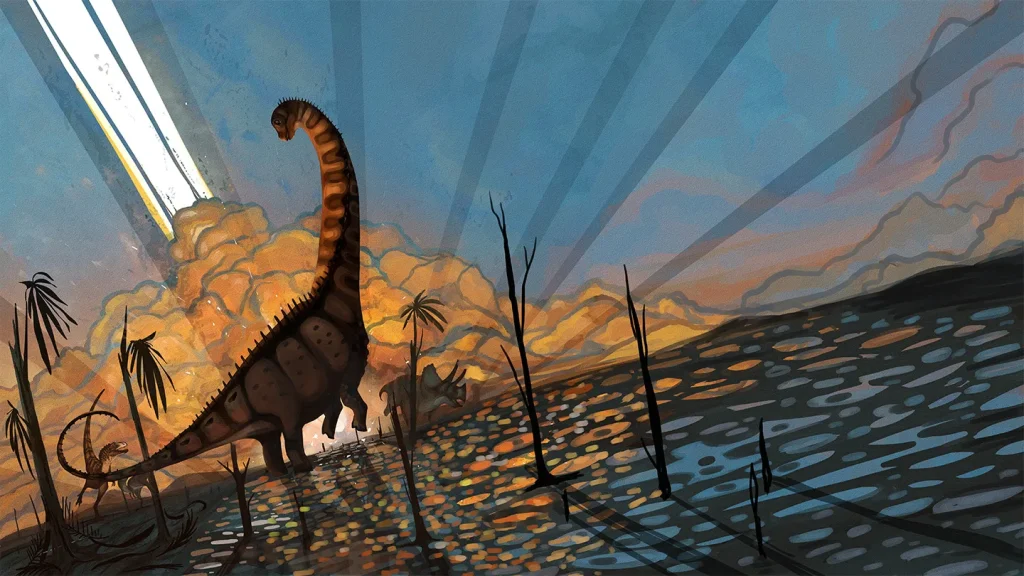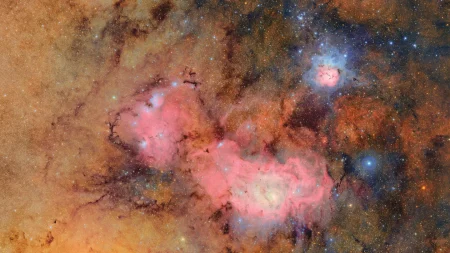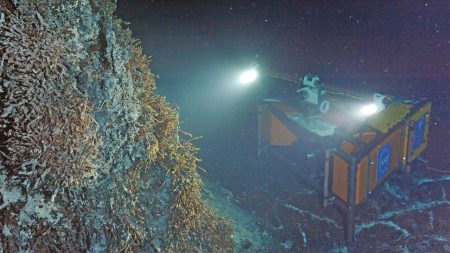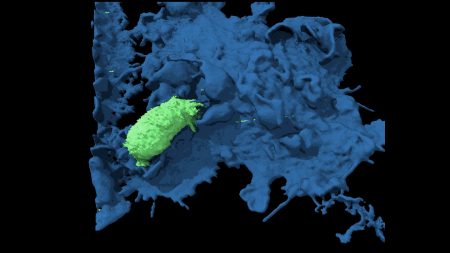Dinosaurs Were Thriving, Not Declining, Before Asteroid Impact
A groundbreaking study published in Science on October 23 has shed new light on the final days of dinosaurs, challenging the long-held theory that these magnificent creatures were already in decline before their extinction. Researchers have discovered that a rock formation in New Mexico contains evidence of a flourishing dinosaur ecosystem that existed mere hundreds of thousands of years before the catastrophic asteroid impact 66 million years ago.
Andrew Flynn, a geologist at New Mexico State University in Las Cruces, and his team have precisely dated the Naashoibito Member formation in New Mexico, revealing its true age to be approximately 66.38 million years old. “It is literally the last hundreds of thousands of years of the Cretaceous,” Flynn explains. Previous estimates had placed these rocks anywhere from 70 to 67 million years old, but this new dating firmly establishes them as contemporaneous with the well-known Hell Creek formation in the northern United States. This discovery provides a crucial snapshot of dinosaur life immediately before extinction, adding weight to the argument that “without this impact, they weren’t on their way out.”
The fossils found in the New Mexico formation paint a picture of thriving biodiversity, featuring crested hadrosaurs (duck-billed dinosaurs), long-necked sauropods like Alamosaurus, and diverse plant life. Interestingly, the ecosystem differed significantly from that of Hell Creek – while New Mexico hosted sauropods and crested hadrosaurs, Hell Creek contained non-crested hadrosaurs and no sauropods at all. These differences suggest that climate played a crucial role in determining which dinosaur species lived where, reinforcing the idea that dinosaurs were part of complex, fully functioning ecosystems that could have continued if not for the asteroid’s intervention.
Paul Barrett, a paleontologist from the Natural History Museum in London who wasn’t involved in the study, believes these location-based differences in fauna help dispel the notion that dinosaurs were declining before extinction. He suggests that the patchy fossil record has been driving the decline debate, noting that “most of our knowledge of what happens in those last few thousand years before the end of the Cretaceous comes from a relatively small area of North America that happens to have rocks of the right age and right type to capture those animals.” While this new study adds another location to our understanding, Manabu Sakamoto of the University of Reading points out that it still lacks a global perspective.
Sakamoto, who published research in 2016 arguing that dinosaurs had been in decline tens of millions of years before extinction, maintains that the debate is more nuanced than it appears. He suggests that while dinosaurs may have maintained species numbers, they were experiencing a “variation of the same theme” – when one species went extinct, it would be replaced by something similar rather than a completely different type of dinosaur with novel adaptations. This perspective offers a middle ground in the ongoing debate about dinosaur diversity before extinction.
Regardless of whether dinosaurs were in decline or flourishing, scientists agree that the asteroid impact created environmental changes that non-avian dinosaurs couldn’t survive. As Barrett notes, “Although it’s something that happened a long time ago, there are still potentially lessons to be learned about how different groups of animals and plants respond to major environmental perturbation.” In our current era of climate change and biodiversity loss, these ancient lessons about ecosystem resilience and catastrophic disruption may prove more relevant than ever, connecting the distant past to our present environmental challenges in ways that continue to inform our understanding of life on Earth.















